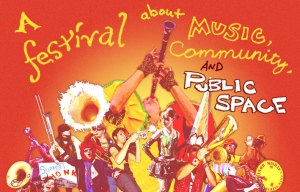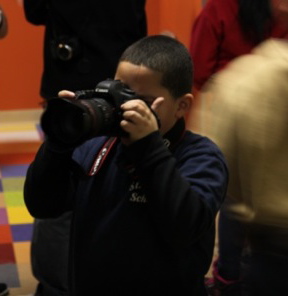“Commemorations sanitize further the messy history lived by the actors. They contribute to the contentious myth-making process that give history its more definite shapes: they help to create modify, or sanction the public meaning attached to a historical events deemed worthy of mass celebration. As rituals that package history for public consumption, commemorations play the numbers game to create a past that seems both more real and more elementary. “
~Michel-Rolph Trouillot
Last year I was inspired by this beautiful video asking people to reconsider Columbus Day by engaging in a critical view of the contentious holiday. While the video urges us to visit ReconsiderColumbusday.org, a website that is no longer in operation, I will further challenge you to conduct your own research to learn more about this complex narrative.
Today many celebrate Columbus Day with little thought of its origins. While there is much media attention given to why we should reconsider our celebration little attention is given to the historical construction of the holiday.
So how and when did Columbus Day come to have so much sway in the United States? The answer is an unlikely source.
The Tammany Society incorporated in New York 1789 consisted of gentlemen who’s taste for public attention via parades and lavish banquets inspired their celebration of any date that fit their calendar. Columbus’s landfall as they referred it was listed on their calendar as early as 1790. By what seems a historical accident the Tammany’s most lavish celebration occurred on October 12, 1792; 300 years after the initial first landing. Despite the societies promised to continue the celebration for years to come, the holiday all but disappeared again for nearly another 60 years, where it found a new cult following by the recently immigrated populations whom needed an icon to legitimize their importance within the American narrative of stodgy WASPS.
Both the Spanish, who has sponsored Columbus’s travels and the Italians, which Columbus was by birth latched on to the Columbus Day celebration sponsored by Sharpshooters Association of New York and spread it across the nation. While 1866 marked the rebirth of the holiday and launched similar celebrations from Philadelphia and Boston to New Orleans and San Francisco the cult following was still minuscule with only 3,679 individuals claiming Italian heritage in 1850.
An unlikely population also took up the cause, the Irish American, which numbered 962,000 by 1850. Many Irish became parts of the Knights of Columbus by way of their Catholic association. The Catholic religion which crossed national boundaries allowed these groups to find common ground outside their immigrant status in this Catholic male fraternal order. The Knights of Columbus which promoted the concept of citizen culture was just the right group to help these marginalized individuals find a home within the WASP nation.
The Catholics felt vindicated by their hero’s national recognition at the Chicago Worlds Fair in 1892. By the 1890’s the US’s appropriation of Columbus had became a national phenomenon. In 1892 one of the 400 year Anniversary celebrations held in New Haven Connecticut attracted 40,000 people including 6,000 Knights of Columbus and was deemed a celebration of holiness and patriotism. As Columbus became a national icon he also became more white, this new white status lent itself to those who claimed his history as their own including the marginalized Italians, Spanish, and Irish Catholics.
This story holds particular importance for Rhode Island as it is the most Catholic state in the nation and the ethnic identity claimed by more people than any other is Italian. This little bit of history I have provided was lent to me through Michael- Rolph Trouillot’s book Silencing the Past which documents the holes in the Haitian story of Revolution and Independence. The cliche “history is written by the winners” should serve as a continual reminder that history needs to persistently be reevaluated to determine the complex nature that makes up our current conceptualization of the past.
In 2009 Brown University chose to rename Columbus Day to Fall Weekend a protest to the nature of Christopher Columbus’ conquests and treatment of Native Americans. This was decayed by national icons such as Rush Limbaugh and the then Providence Mayor David Cicillini who stated ” it diminished the accomplishments of explorer Christopher Columbus, an important historical figure for Italian-Americans and As an Italian-American, I take particular offense to this decision”.
As Columbus day is reevaluated and actions taken to reconcile the new knowledge offenses are sure to be voiced. We must remember what is true for you may not be true for me. The Columbus day we all learn about in school is one devoid of the negative repercussions that resulted from Columbus’ interactions with the Taino natives who were all but wiped out by the arrival of Columbus and his men on Hispaniola. As Columbus has become a national icon his image has been sanitized and his myth like status is all that remains.
I challenge you to complicate your own understanding of the days history take the plunge and learn more.
Interesting Articles
- Brown Article on the Fall Weekend name change
- ProJo’s Article of Cicillini’s response
- Excerpt form:The Last Hours of the Ancient Sunlight: The Fate of the World and What We can Do Before It’s Too Late. Columbus Day Celebration? Think Again…
- Columbus: Continuation of a Genocidal Legacy
- Strong bias but serves as the counter argument to the sanitized Columbus day we learn about.








